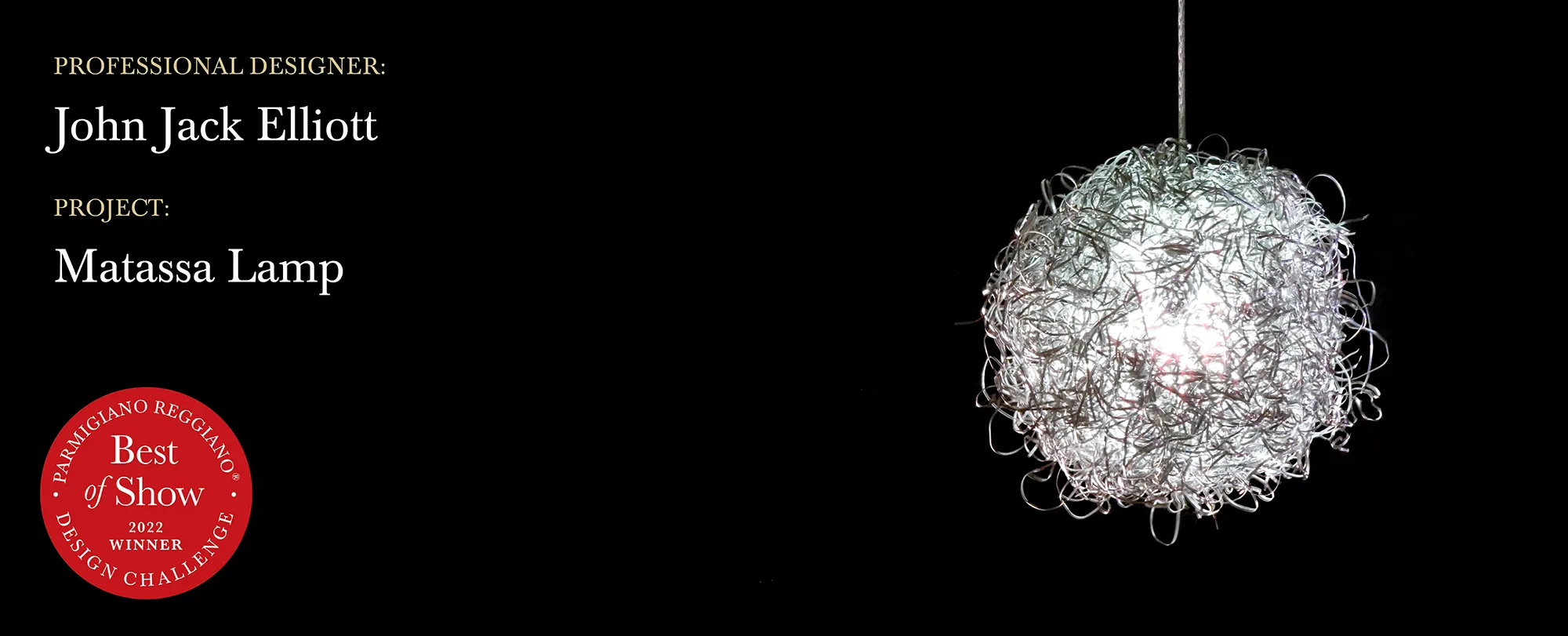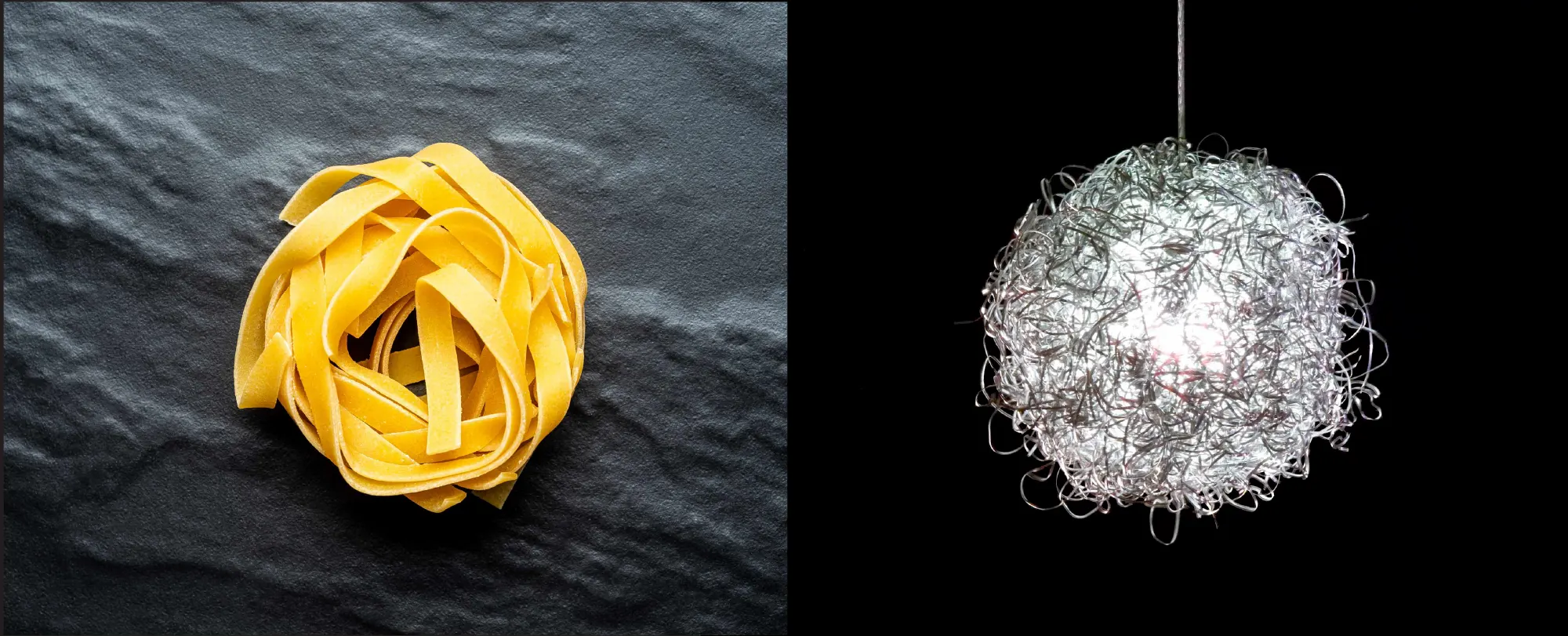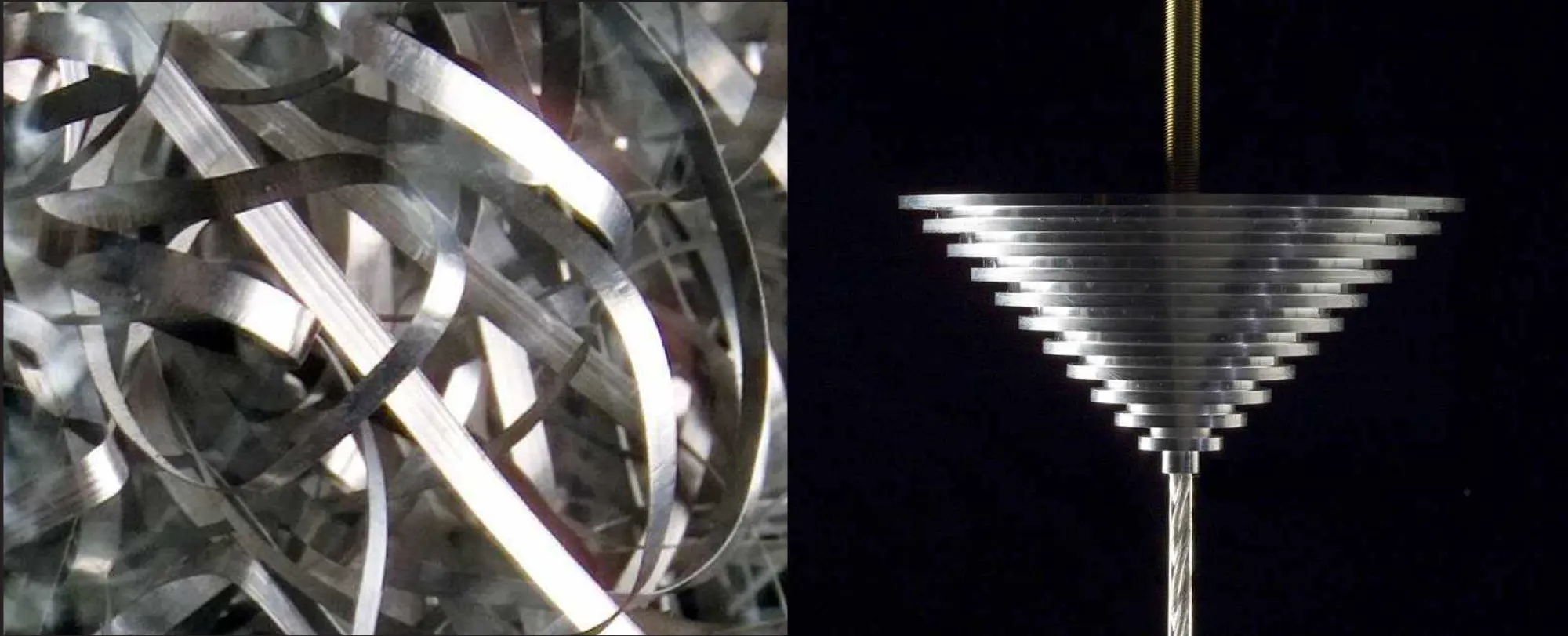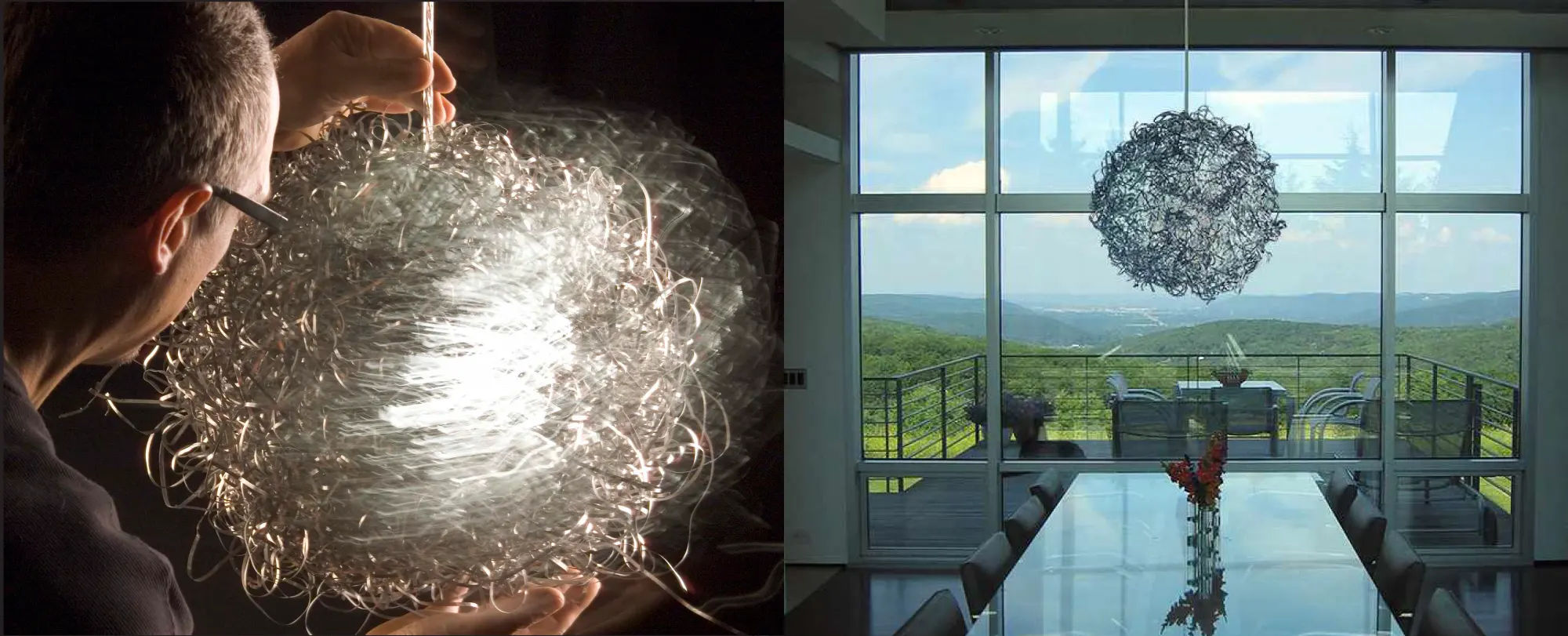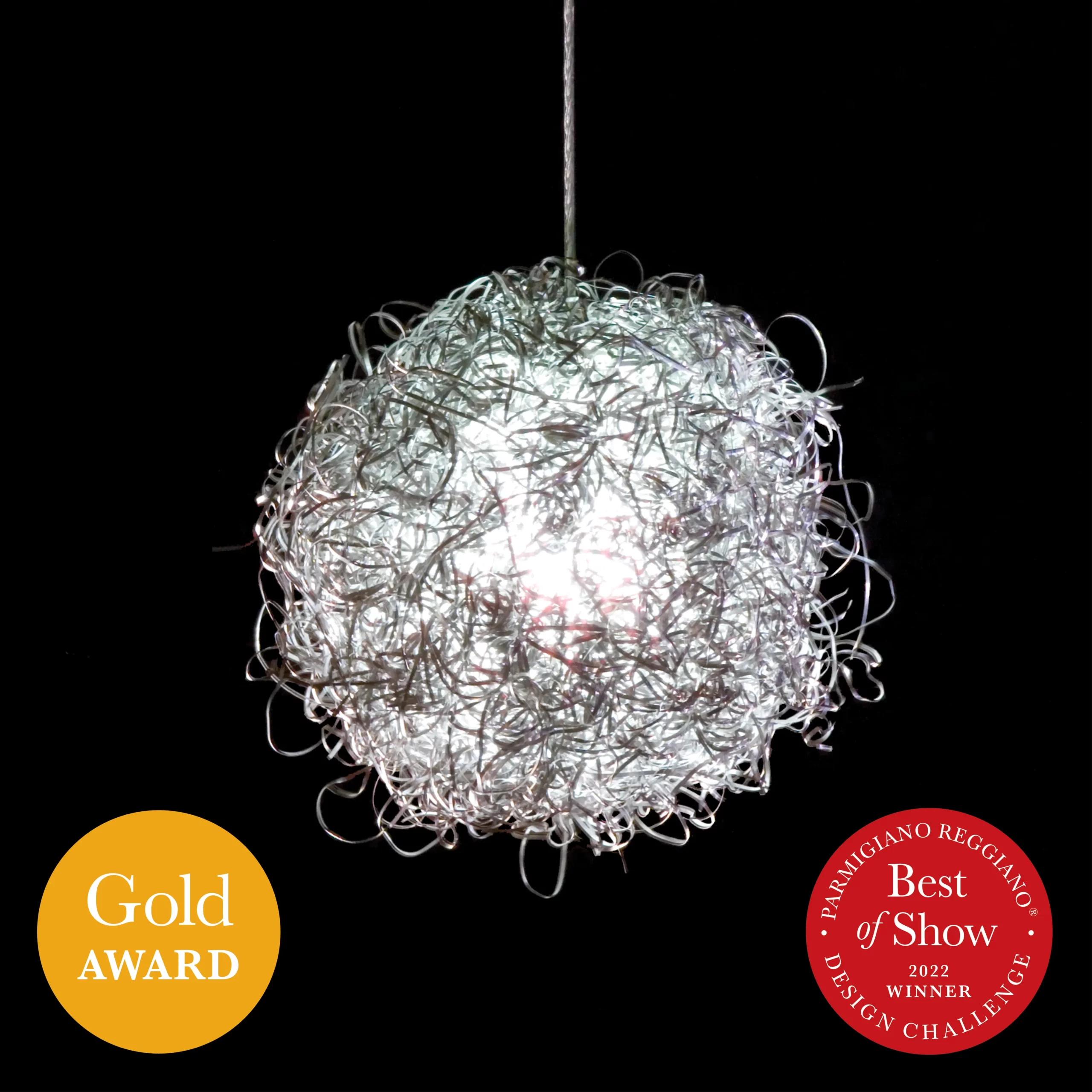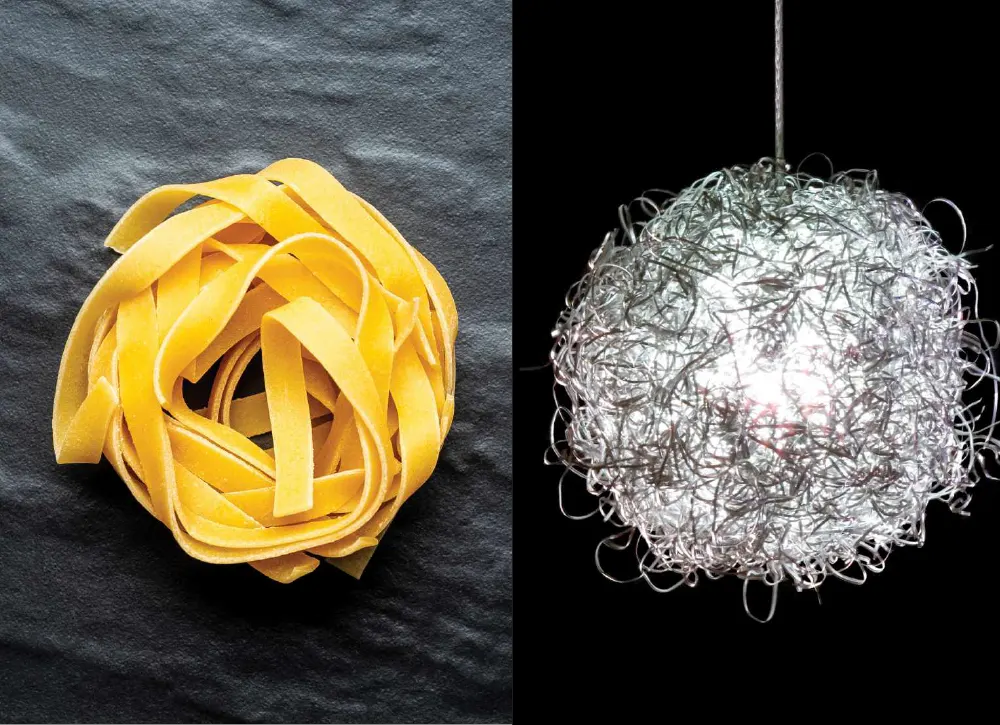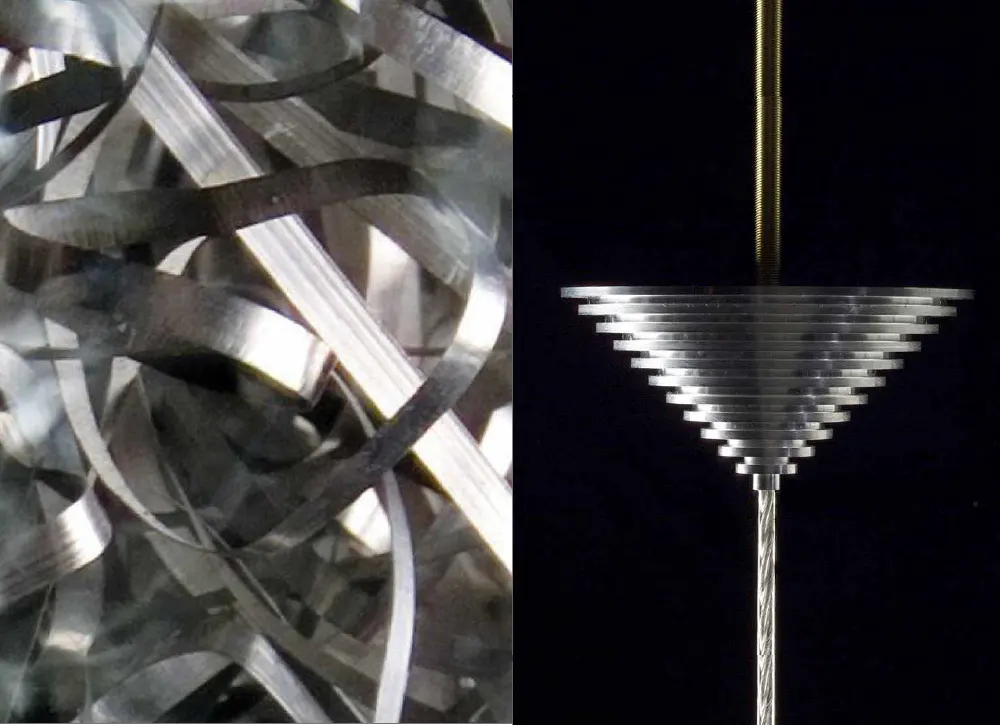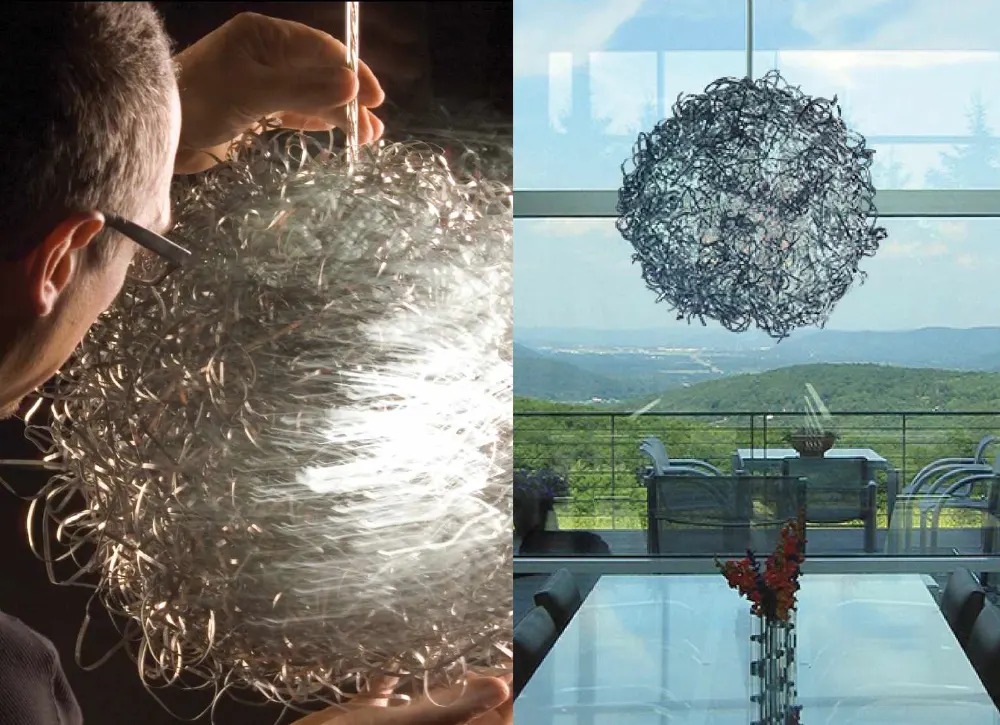DESCRIPTION:
The shape of the Matassa Lamp was inspired by a ball of tagliolini, a long flat pasta that is cut into thin strips and sold as tangled clumps. The result is a sculptural light fixture that offers a softly diffused lighting source by which to enjoy a perfectly cooked pasta made more savory with a generous sprinkle of Parmigiano Reggiano cheese.
THEME: ZERO WASTE
What is unique about this project is that the waste created by the fabrication of one part of the product is used as another component in the same product. In this case, the scraps from the machining of the aluminum ceiling rose is used for the diffuser of the pendant lamp, resulting in zero waste. In keeping with this theme and its associated environmental responsibility, the aluminum stock used is made from 100% post-consumer content and the bulb is a full spectrum LED. At the end-of-life, the product components that cannot be reused can be recycled.
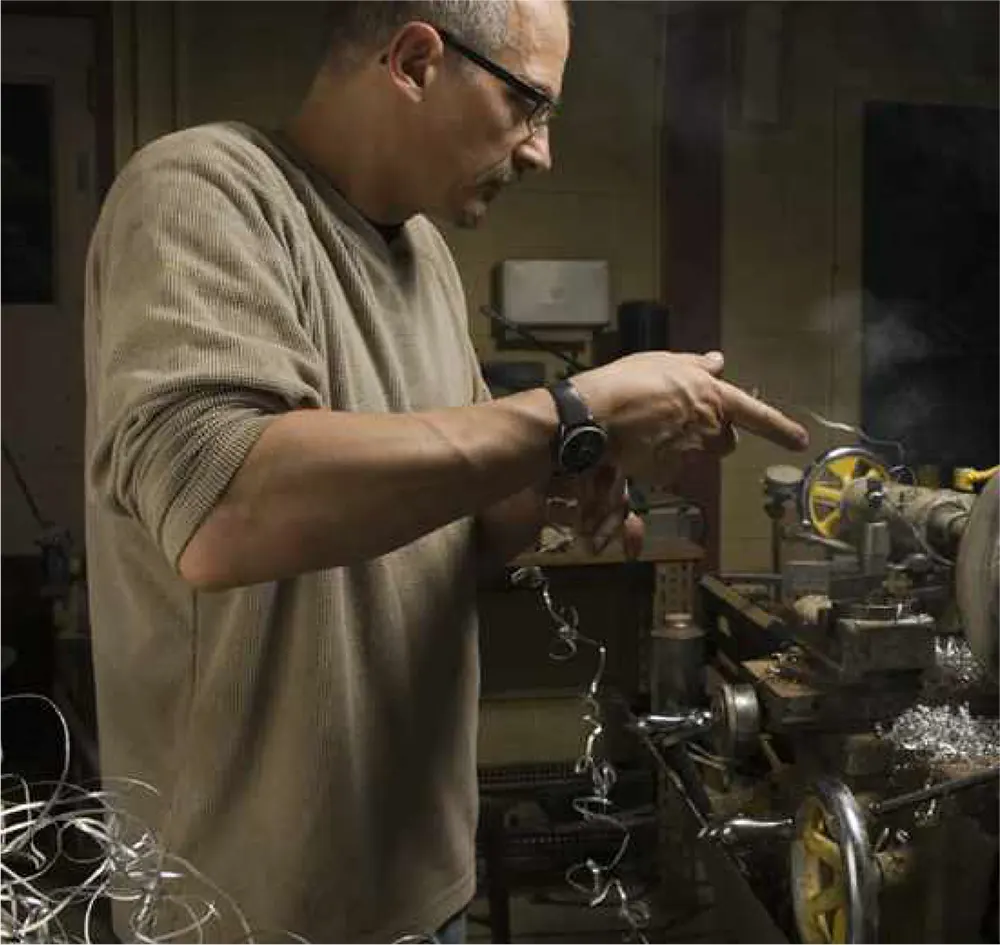
ABOUT THE DESIGNER:
John Elliott is the Director of Graduate Studies, Associate Professor Human Centered Design at the College of Human Ecology at Cornell University, in New York.
BACKGROUND:
My research interests are related to the idea of “Nature inside” both in a theoretical and a practical sense. In the theoretical domain, I am interested in the aspects of material culture of the built environment that express a society’s set of values as they pertain to the natural world, especially regarding environmental ethics and aesthetics. I am currently working on a global history of environmental thought as expressed through design.
In the practical sense, I am interested in “pulling” technology through the physical project situated in a real world context. I use the prototype as a stimulant for design discourse, a conductor for technological developments, and an exemplar for commercial enterprise. These prototypes range in scale from the artifact to the edifice; from a pair of benches installed on the National Mall in Washington D.C. to a bamboo space-framed outdoor classroom in the Dominican Republic.
Recently, I have turned to sculpture as a medium for expression of these ideas. My “Arbortecture” works are exploring the intimate relations between people, trees, and buildings. They have been exhibited at many galleries and museums throughout the Northeast, including the Johnson Museum at Cornell and the Sculpture Center in Cleveland. Additionally, a number of pieces have been commissioned for public art, including Cornell campus and the Stone Quarry Hill Art Park in Cazenovia.
I am also interested in material science research and have been investigating the effects of carbon sequestration on the structural strength of concrete. Finally, I have been creating a body of sculptural works in wood as a form of public outreach regarding various local environmental issues.
